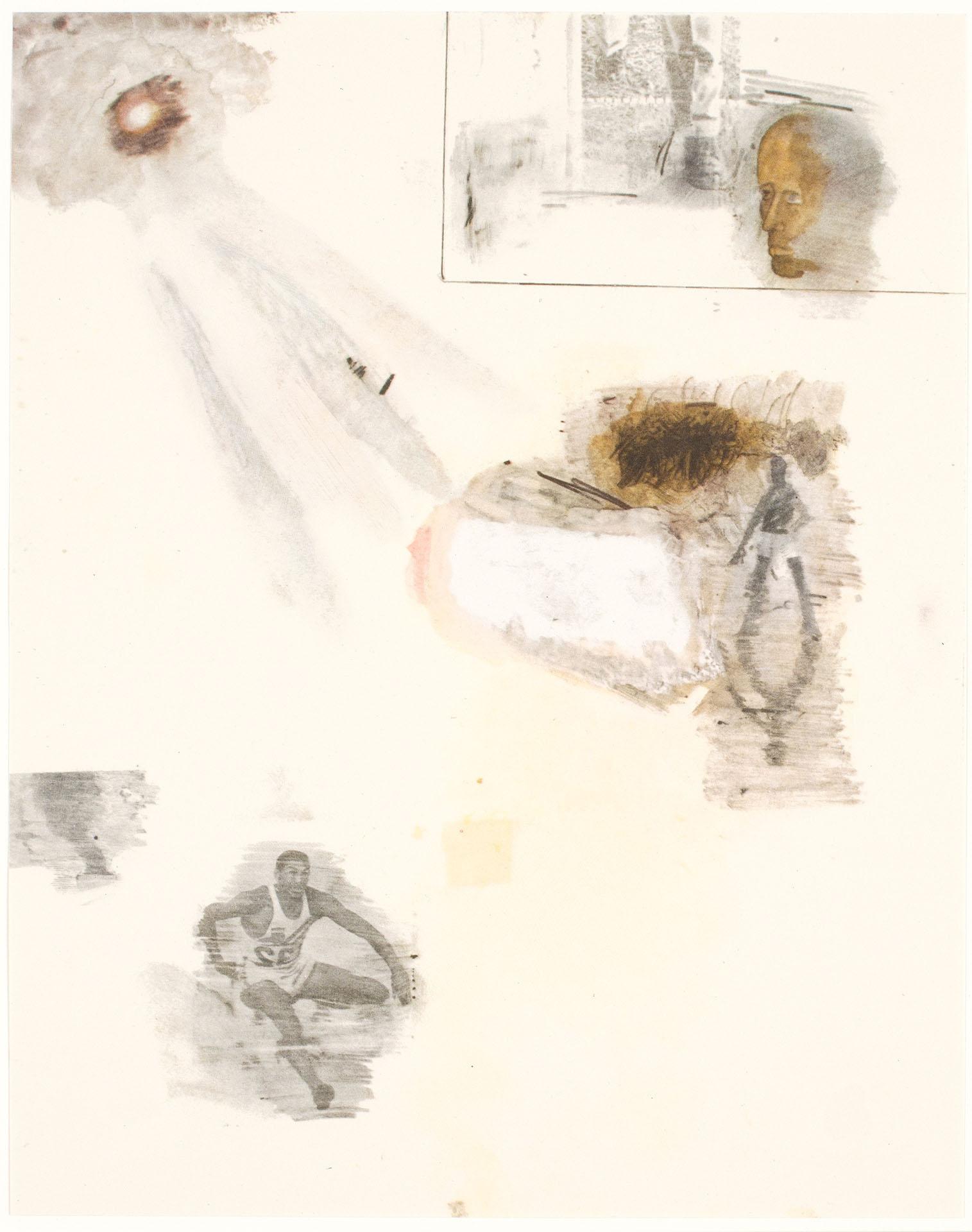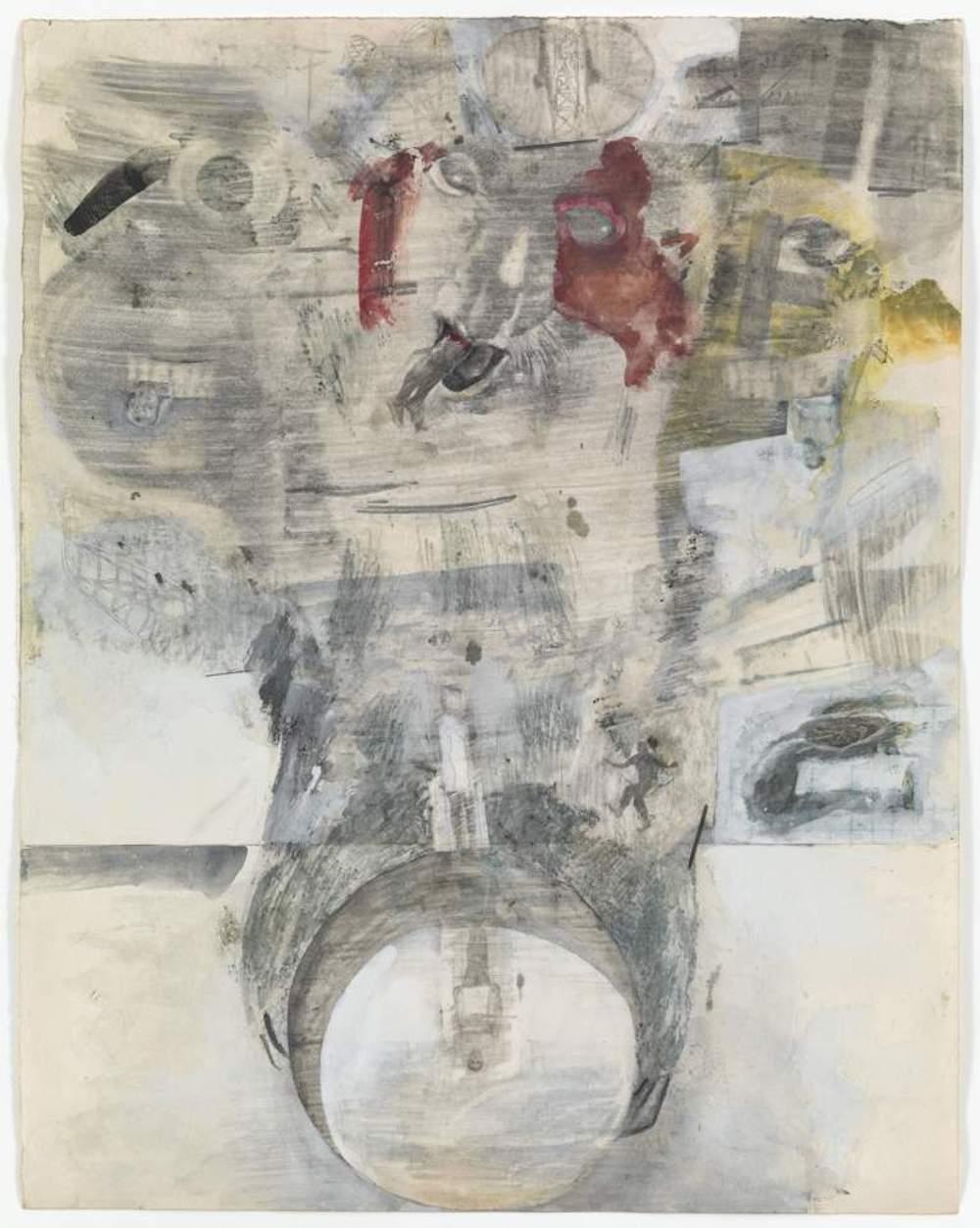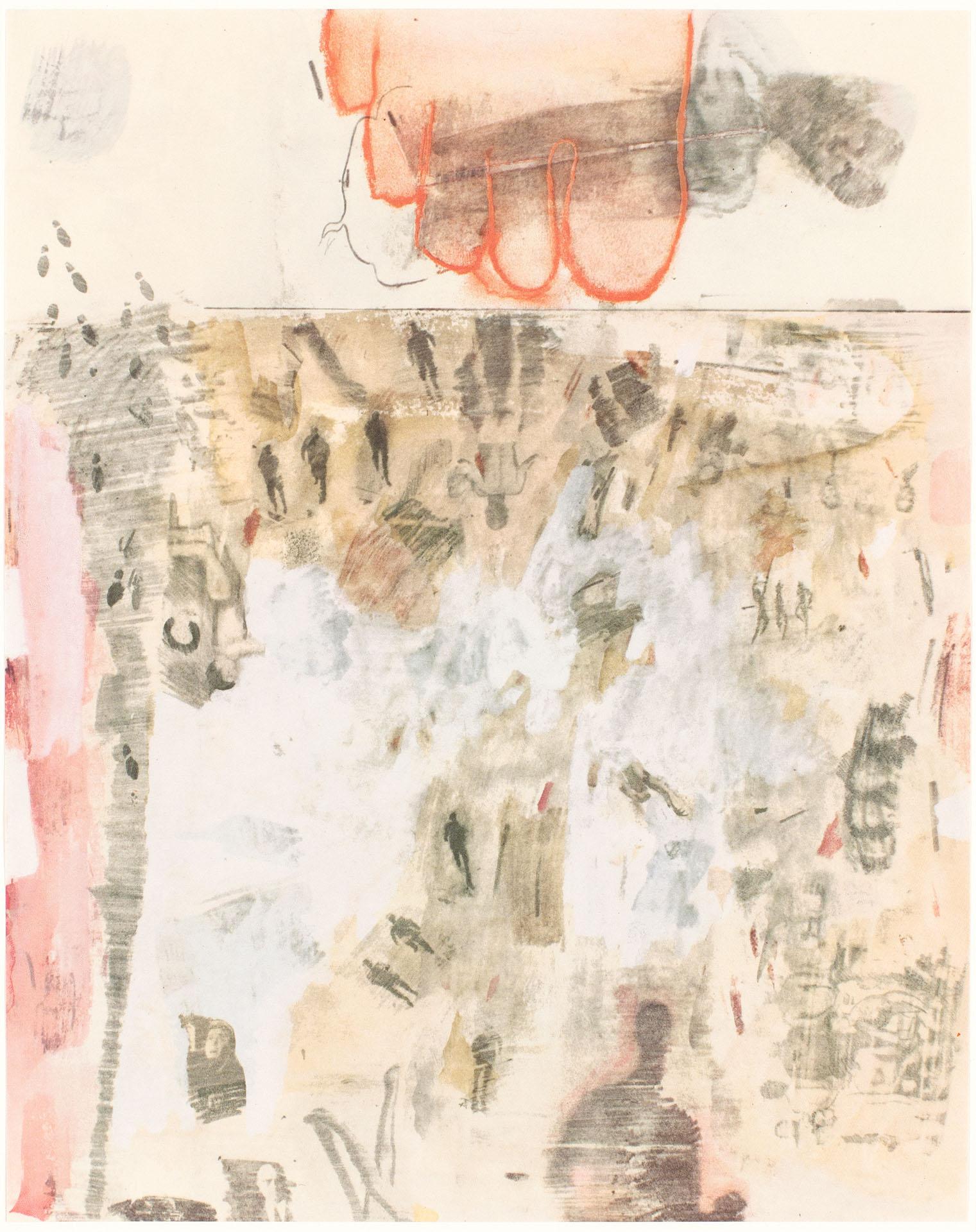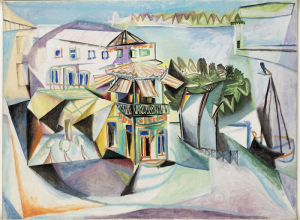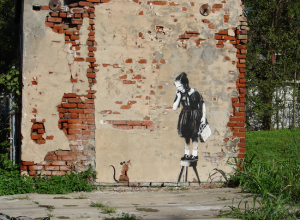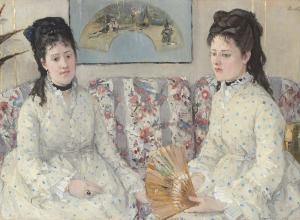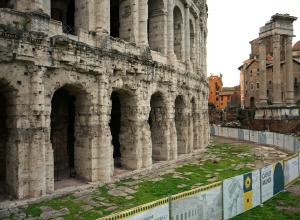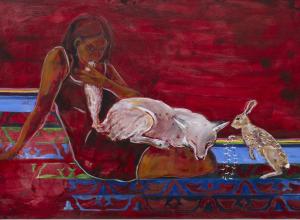In Dante’s thirty-first canto, protagonists have climbed to the top of a stony chasm to assess their approach to the final circle. XXXI asks viewers to envision this narrative from transfers of Olympic athletes atop a podium, chains, fingers, a frightened-looking face, a trombone, and the artist’s scribbles. The athletes in the illustration are versions of the Giants masquerading as great towers; Rauschenberg’s figures are contemporary iterations of the poem’s characters.
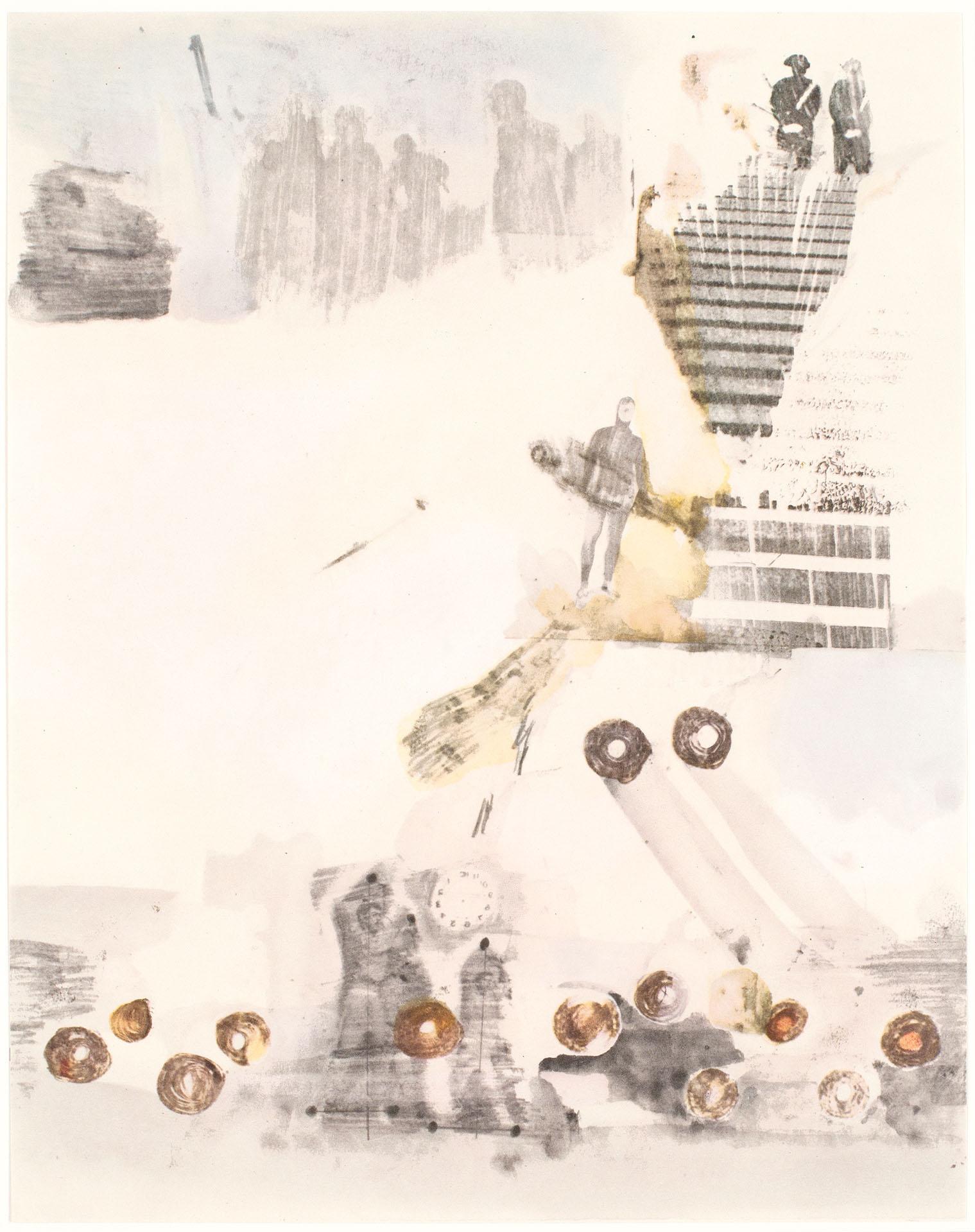
Robert Rauschenberg, XXXIV Drawings for Dante's Inferno: XXIII, 1965. Color offset lithograph. Sheet: 14 9/16 × 11 7/16 in. (37 × 29 cm).
In 1958, Robert Rauschenberg began a difficult series of illustrations of Dante Alighieri’s fourteenth-century poem Inferno. The thirty-four mixed-media images foreground the process of their construction as much as their literary subjects.
To illustrate each canto, Rauschenberg rubbed the backs of snapshots from magazines such as Sports Illustrated and Life with a bald ballpoint pen to transfer them onto sheets of paper. The artist added layers of marks to create multifaceted compositions. The results are hazy and eerie, with occasional elements continuing from one part of the narrative to the next, much like the poem’s structure.
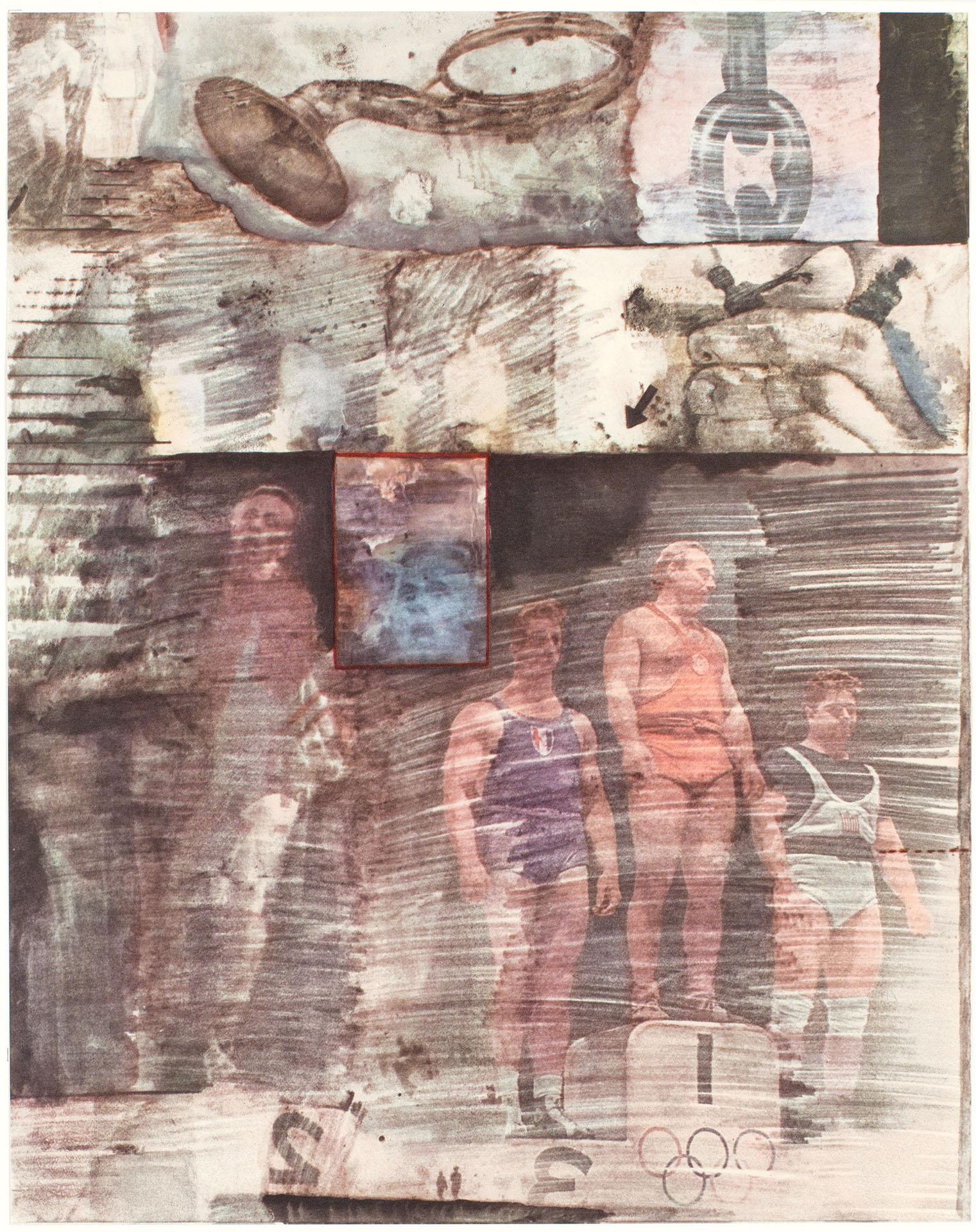
Robert Rauschenberg, XXXIV Drawings for Dante's Inferno: XXXI, 1965. Color offset lithograph. Sheet: 14 9/16 × 11 7/16 in. (37 × 29 cm).
XXXIV is a sparser composition, with five major elements connected by smudges. In the poem, fog obscures a shape ahead of the protagonist as he steps over thick ice. The illustration suggests distant objects separated by haze and imperceptible things hidden beneath a surface. Like the other panels in this series, XXXIV invites viewers to intuit connections between popular culture imagery and a centuries-old story.
Dante’s poem leads readers through an epic journey. Rauschenberg’s illustrations similarly guide viewers through the artist’s meandering way of giving visual presence to each stage of the narrative. Just like how the poem requires active engagement from readers, Rauschenberg’s images demand close attention to reveal their many facets.




